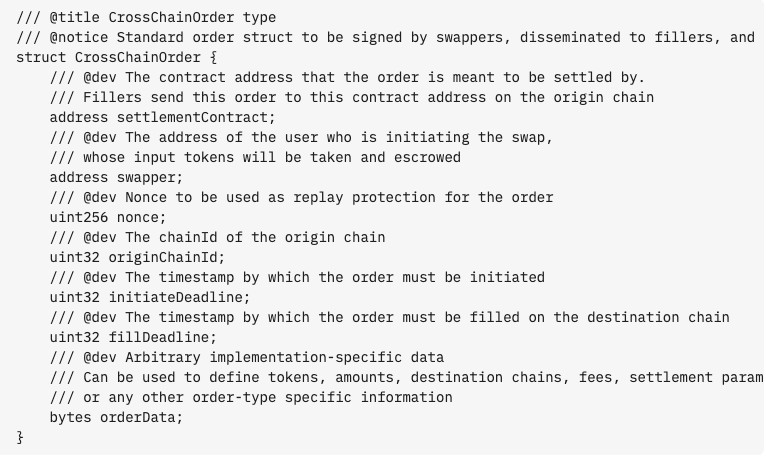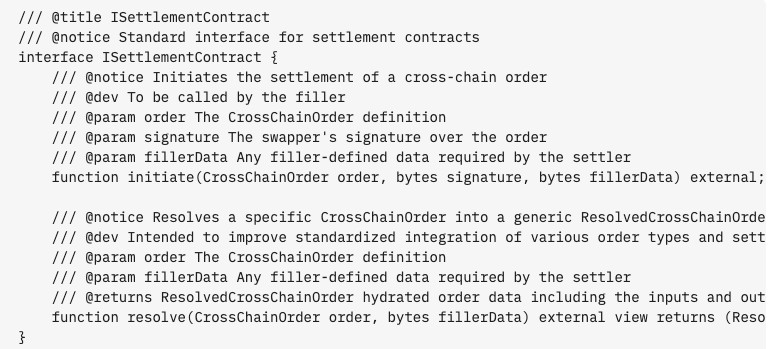Connecting Blockchain Networks: The Vision of ERC-7683 for Revolutionizing Cross-Chain Exchanges and Transactions
In Brief
Uniswap Labs has introduced a groundbreaking Ethereum standard, ERC-7683, aimed at enhancing interactions and transactions across different blockchain networks, targeting the inefficiencies that persist within the blockchain ecosystem.
In the past few years, the blockchain landscape has witnessed tremendous growth and innovation, unleashing a wave of protocols and decentralized applications (DApps) across various sectors. Despite this progress, a significant challenge remains: the lack of seamless communication and interoperability between differing blockchain networks. This issue affects cross-chain swaps and transactions, where users often encounter numerous obstacles and operational inefficiencies.
The company behind the widely-used decentralized exchange, Uniswap, Uniswap Labs recently proposed a novel Ethereum standard called ERC-7683 . This new standard empowers intent-driven systems to articulate cross-chain operations more effectively, thereby enhancing the process for executing cross-chain trades.
What is ERC-7683?
The ERC-7683 standard outlines a comprehensive framework and interfaces designed for platforms executing cross-chain transactions. At its core, it creates a unified ISettlementContract smart contract interface, paired with a versatile CrossChainOrder structure.
The CrossChainOrder structure is specifically designed to function as a uniform order format that users (swappers) can endorse and distribute to market makers or relayers (fillers) for execution. Among its essential components are the settlement contract address, the address of the swapper, a nonce for replay protection, chain identifiers, expiration limits, and a customizable orderData field that accommodates implementation-specific details.

Photo: CrossChainOrder struct, ERC7683
On the flip side, settlement contracts must implement a defined set of functions as per the ISettlementContract interface. This includes the resolve function, which transforms a specific CrossChainOrder into a ResolvedCrossChainOrder that can be more effortlessly processed by various order types and settlement contracts, as well as the begin function, enabling fillers to initiate the settlement of a cross-chain order.

Photo: ISettlementContract interface, ERC7683
The settlement process incorporates the parameters to be taken from the swapper, the outputs to be delivered to the swapper, and the outputs to be conveyed to the filler, all delineated by the ResolvedCrossChainOrder struct, which embodies an order.
Understanding the Goals Behind ERC-7683's Integration
Using intent-based systems presents a practical approach to establish cross-chain links without the temporal constraints customary to traditional bridges. However, these systems often grapple with securing adequate liquidity and maintaining a robust network of active fillers across multiple chains.
With the establishment of standards like ERC-7683, cross-chain intent systems can effectively collaborate and share foundational infrastructure, including filler networks and order routing services.
The Benefits of ERC-7683
Stakeholders across the ecosystem — from applications to fillers and end users — stand to reap substantial benefits from the widespread adoption of ERC-7683.
Designed specifically for intent-based systems, ERC-7683 strives to elevate the user experience regarding cross-chain transactions. By standardizing processes, it reduces costs, accelerates transaction times, and enhances reliability. Additionally, protocols and applications can leverage the interfaces and data structures defined by ERC-7683, simplifying integration, boosting interoperability, cutting development expenses, and nurturing a cohesive ecosystem.
Market makers, referred to as fillers, will benefit from heightened liquidity and order flow thanks to a more extensive array of applications and an expanded order pool. This scenario opens up more lucrative possibilities and draws in additional participants to the filler ecosystem. ERC-7683 fosters liquidity and competition across numerous blockchain networks, resulting in improved pricing and execution for users.
ERC-7683 Design Considerations
During the creation of ERC-7683, a number of fundamental factors were carefully considered to ensure its effectiveness and widespread adoption. One significant aspect was the inclusion of a universal orderData field within the CrossChainOrder struct. This field allows for customized implementation details and adaptations such as fulfillment limits, settlement methodologies, and pricing resolution techniques (like Dutch auctions or Oracle-based pricing).
ERC-7683 is designed to support a diverse range of cross-chain intent frameworks while remaining under a single standard. It promotes a variety of solutions, enabling different implementations to collaborate and coexist harmoniously.
Another important design decision was the incorporation of the Permit2 standard. The unique features of Permit2 allow swappers to approve both the order conditions and token transfer with a single signature, even though ERC-7683 does not necessitate this functionality.
ERC-7683 Adoption and Collaboration
While ERC-7683 is still in its proposal phase, its potential impact on the blockchain ecosystem is immense and cannot be overstated. Uniswap Labs, in collaboration with Across Protocol, has already initiated the initial steps by submitting an Ethereum Request for Comment (ERC) on the Ethereum Magicians forum and presenting the standard to the CAKE Working Group for further examination and discussion.
Initiatives like ERC-7683 have the potential to cultivate a more integrated and accessible cross-chain ecosystem, encouraging cooperation among various projects and facilitating smooth, efficient exchanges across blockchain networks.
Ultimately, however, the success of ERC-7683 will hinge on the collaborative efforts of the entire blockchain community.
Disclaimer
In line with the Trust Project guidelines , please keep in mind that the information presented on this page is not intended to serve as legal, tax, investment, financial, or any other form of advice. It's crucial to only invest amounts you can afford to lose and seek independent financial counsel if you have any uncertainties. For additional information, we recommend reviewing the terms and conditions as well as help resources provided by the issuer or advertiser. MetaversePost is dedicated to delivering precise, impartial reporting, although market dynamics are subject to change without notice.







